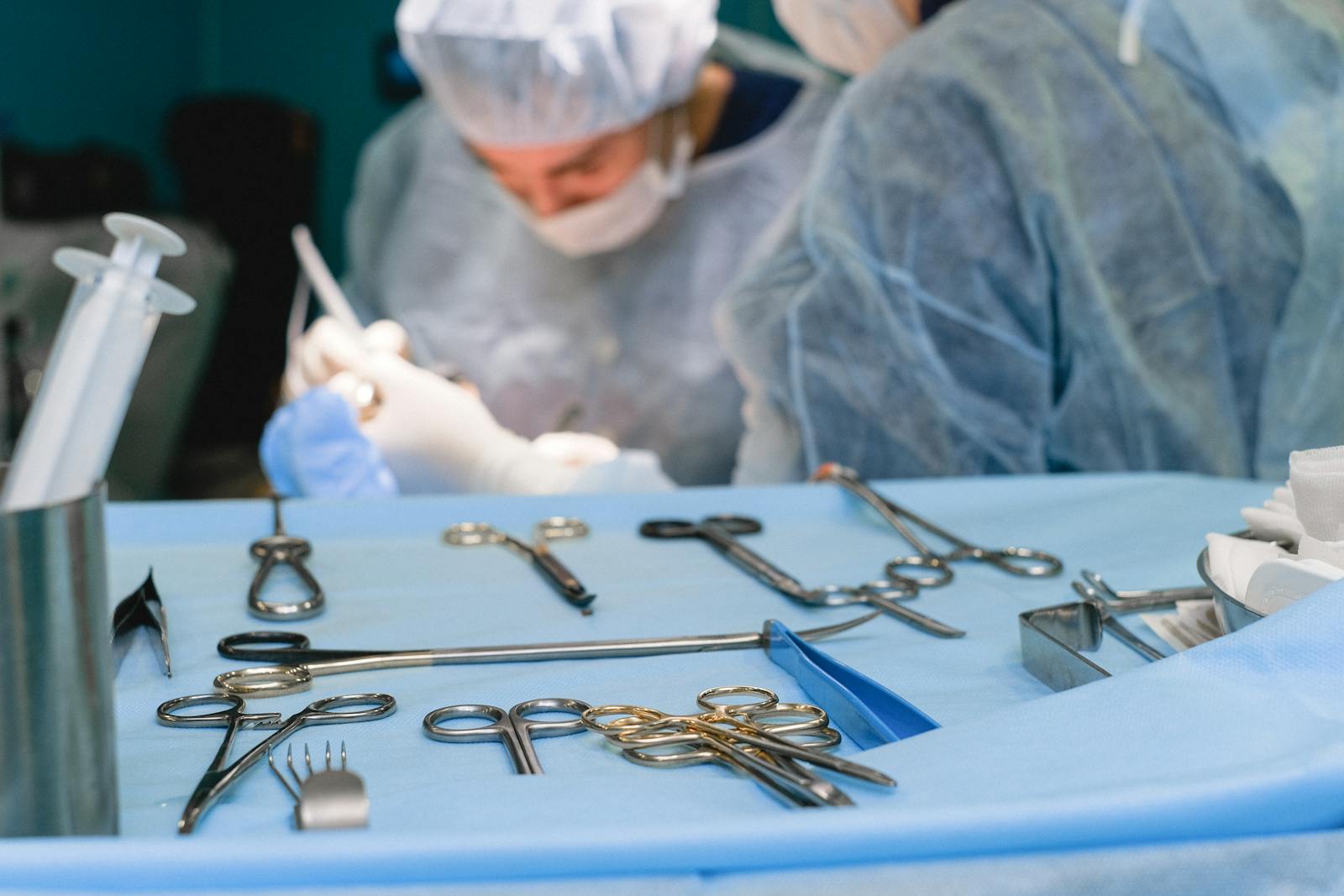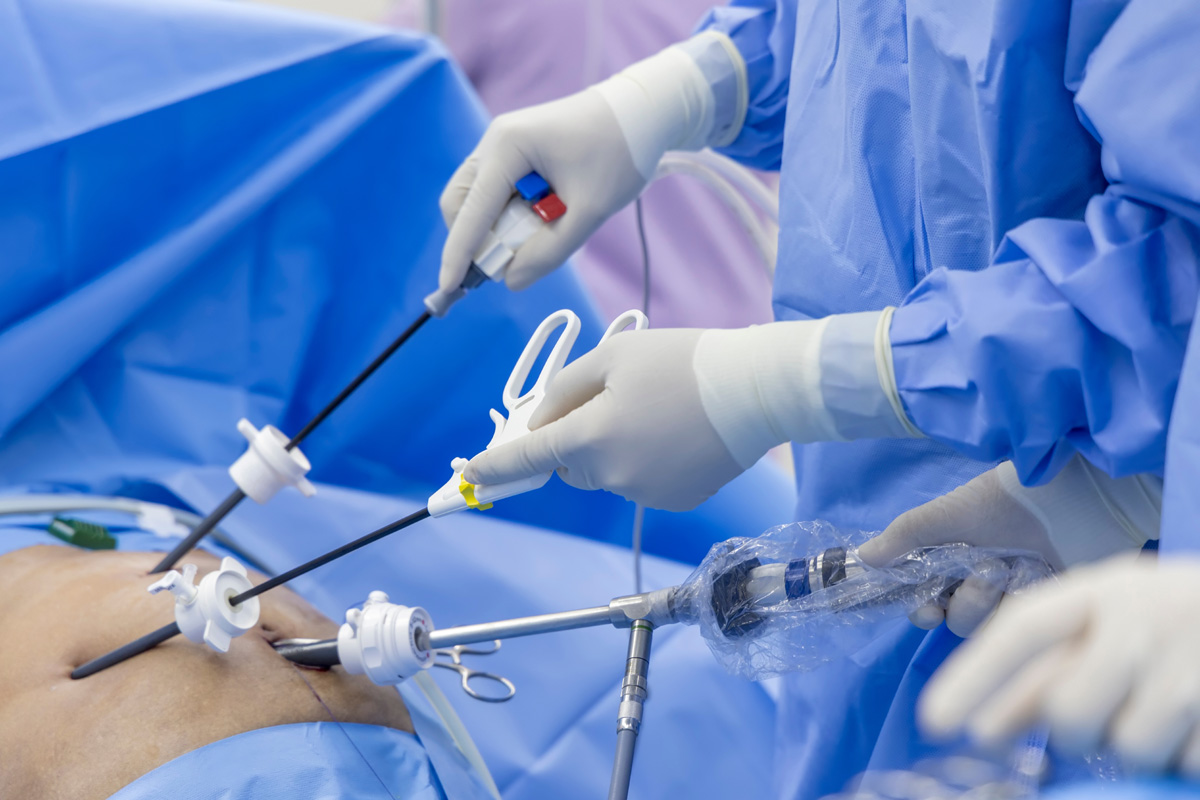Sciatica, characterized by pain that radiates along the path of the sciatic nerve, poses a significant discomfort to a large number of individuals worldwide. From conservative treatments to surgical procedures, a range of options exist for managing this condition. When non-surgical methods fail to provide relief, the consideration naturally shifts towards more invasive procedures. The decision to proceed with a surgical intervention, be it a microdiscectomy or a laminectomy, is not one to be taken lightly. A careful evaluation of the potential benefits, risks, and long-term outcomes is an essential part of the decision-making process.
Understanding Sciatica
To grasp the medical procedure for treating sciatica, it is important to first understand the condition itself, which is characterized by pain radiating along the path of the sciatic nerve. This nerve, the longest and widest in the human body, stretches from the lower back, through the buttocks, and down the leg. When irritated or compressed, it can cause a range of symptoms, including acute pain, numbness, and weakness, typically on one side of the body.
The prevalence of sciatica varies globally, with estimates suggesting that up to 40% of the adult population will experience it at some point in their lives. This high prevalence can impact the psychological health of sufferers. Chronic pain conditions like sciatica can lead to increased levels of stress, anxiety, and depression due to the persistent discomfort they cause. In severe cases, it can disrupt sleep and limit mobility, leading to a diminished quality of life.
Understanding this context is important in comprehending the medical approach to treating sciatica. The strategies employed are not only aimed at relieving pain but also mitigating the psychological impacts associated with the condition.
Causes of Sciatica
Commonly, sciatica is caused by a range of medical conditions that lead to irritation or compression of the sciatic nerve, with the most frequent being lumbar disc herniation. This condition arises when a disc in the lower spine protrudes from its usual location, leading to nerve impingement. The protrusion is often the result of age-related wear and tear, known as disc degeneration.
Apart from lumbar disc herniation, other medical conditions such as spinal stenosis, spondylolisthesis, or piriformis syndrome can also lead to sciatica. Tumors, infections, or internal bleeding within the hips or buttocks could also compress the sciatic nerve, triggering sciatica.
Furthermore, genetic predispositions play a significant role in the development of sciatica. Some individuals may be genetically predisposed to develop conditions like disc degeneration or spinal stenosis, thereby increasing their risk of sciatica.
Occupational hazards are another contributing factor. Jobs that require heavy lifting, twisting of the back, or prolonged sitting can increase the risk of developing sciatica. This is due to the increased pressure on the spine, which can lead to nerve damage. Therefore, understanding these causes is vital in the prevention and management of sciatica.
Symptoms and Diagnosis
The clinical manifestation of sciatica can vary widely, with patients commonly reporting symptoms such as sharp pain, numbness, or weakness that radiates along the path of the sciatic nerve – from the lower back, through the buttock, down to the back of the leg. These symptoms often exacerbate when the patient is sitting, coughing, or sneezing.
Here are three critical points to remember about sciatica:
- The presence of risk factors such as obesity, prolonged sitting, and diabetes can increase the chances of developing sciatica.
- Diagnosis typically involves a physical examination to evaluate muscle strength and reflexes, as well as imaging tests like MRI or CT scans when necessary.
- The emotional impacts of sciatica can be significant, with chronic pain leading to anxiety or depression in some patients.
It’s important to note that while these symptoms can be extremely discomforting, they do not always indicate a serious medical condition. However, immediate medical attention is required if the patient experiences loss of bowel or bladder control or if the pain follows a violent injury, as these could signal a medical emergency. The next section will discuss non-surgical treatment options available for sciatica.
Non-Surgical Treatments
The conversation now shifts to the exploration of non-surgical treatments for sciatica, encompassing an array of therapeutic interventions. This includes physical therapy approaches, medicinal pain management techniques, along with lifestyle and dietary modifications. Each of these components plays a significant role in managing sciatica symptoms, and their effectiveness varies depending on individual patient circumstances.
Physical Therapy Approaches
In the field of non-surgical treatments, physical therapy approaches emerge as a highly effective strategy for managing the discomfort associated with sciatica. The primary goal of these approaches is to aid the patient’s movement, reduce pain, and prevent further injury. These methods primarily focus on promoting exercise benefits and showcasing acupuncture effectiveness.
- Exercise benefits: Regular physical activity can help strengthen the muscles supporting the spine, improving flexibility, and promoting better posture. Exercise regimens may include stretching, low-impact aerobic exercise, and targeted strengthening exercises.
- Acupuncture effectiveness: This ancient Chinese therapy can reduce sciatic nerve inflammation, promoting pain relief. It involves the insertion of fine needles into specific body points to balance the body’s energy flow.
- Manual therapy: Physical therapists may use hands-on techniques to mobilize soft tissues, improving spinal movement and reducing pain.
Medicinal Pain Management
Beyond the scope of physical therapies, medicinal pain management offers a suite of non-surgical options that can greatly alleviate the discomfort associated with sciatica. These include over-the-counter (OTC) pain relievers, non-steroidal anti-inflammatory drugs (NSAIDs), and prescription medications such as opioids, muscle relaxants, and anticonvulsants. In some cases, corticosteroid injections may be administered to reduce inflammation and pain. Additionally, alternative therapies such as acupuncture and biofeedback have shown potential in managing sciatic pain. Alongside these, psychological support is integral to the holistic management of sciatica. Cognitive behavioral therapy (CBT) can help patients manage chronic pain by altering pain perception and promoting adaptive coping strategies. Therefore, medicinal pain management comprises both pharmacologic and non-pharmacologic modalities.
Lifestyle and Dietary Changes
While medicinal therapies play a significant role in managing sciatic pain, adopting certain lifestyle and dietary changes can further enhance the patient’s capacity to handle this discomfort and promote overall well-being without requiring surgical intervention.
The following non-surgical interventions are worth considering:
- Stress Management: Chronic stress can exacerbate sciatic pain. Techniques such as deep breathing, meditation, and progressive muscle relaxation can help manage stress levels effectively.
- Yoga Benefits: Regular yoga practice can improve flexibility, strengthen the back muscles, and alleviate pain. Specific poses like the pigeon pose are beneficial for sciatica.
- Dietary Changes: Consuming a balanced diet rich in anti-inflammatory foods like green leafy vegetables, berries, and fatty fish can help reduce inflammation and support nerve health.
Incorporating these changes can assist in managing sciatica, offering a holistic approach to pain management.

Physical Therapy Approaches
Through various methods and techniques, physical therapy plays a significant role in treating sciatica by strengthening the patient’s back muscles and improving their flexibility. This therapeutic approach primarily revolves around two main aspects: exercise selection and posture correction.
Exercise selection is important in managing sciatica. Specific exercises, such as hamstring stretches, lower back extensions, and nerve glides, are often prescribed. These exercises target the lower back, hips, and legs, aiming to fortify the muscles, enhance mobility, and alleviate sciatic nerve compression. The exercises are tailored to the patient’s physical condition and pain levels, focusing on gradual progression to ensure safety and effectiveness.
Posture correction, on the other hand, involves educating the patient about ideal body alignment during various activities like sitting, standing, and lifting. Poor posture, a common catalyst for sciatica, can lead to unnecessary strain on the back, causing the sciatic nerve to be pinched. Therefore, posture correction is important in preventing the recurrence of sciatica.
Physical therapists also utilize manual therapy techniques, such as spinal manipulation and soft tissue massage, to provide immediate relief. However, the primary goal of physical therapy remains to equip patients with the necessary knowledge and tools to manage their condition effectively in the long run.
Pain Management Techniques
In the domain of sciatica treatment, different pain management techniques play an important role in alleviating discomfort and enhancing the patient’s overall quality of life. These techniques range from alternative therapies to psycho-social interventions, each with unique benefits and considerations.
Among the alternative therapies, acupuncture has shown noteworthy benefits. This ancient Chinese practice involves inserting very thin needles into specific points on the body, aiming to balance energy flows. Acupuncture benefits include a reduction in pain intensity and frequency, improved sleep quality, and an enhanced sense of well-being.
Psychological support is another essential aspect of pain management. Cognitive-behavioral therapy (CBT) and other psychological interventions can help patients cope with the emotional and psychological stressors associated with chronic pain. Psychological support can foster better pain management skills, improve mental health, and reduce the risk of depression and anxiety.
Other strategies include:
– Non-opioid medicines: These include non-steroidal anti-inflammatory drugs (NSAIDs), anticonvulsants, and antidepressants.
– Physical modalities: Techniques such as heat/cold therapy and transcutaneous electrical nerve stimulation (TENS) can provide relief.
– Lifestyle modifications: Regular exercise, proper nutrition, and good sleep hygiene can contribute significantly to pain management.
Each of these techniques has its benefits and should be carefully considered in consultation with a healthcare professional.
Minimally Invasive Procedures
Shifting the focus to minimally invasive procedures, these medical interventions present an innovative approach to treating sciatica, often resulting in shorter recovery times, less postoperative pain, and reduced risk of complications compared to traditional surgery.
Among these procedures, laser treatment has emerged as a popular and effective technique. During this process, a laser is used to remove or shrink disc material that is pressing on the sciatic nerve, thereby alleviating pain. The precision of this technique allows for a focused treatment area, minimising damage to surrounding tissues.
Furthermore, it is important to recognise the influence of genetics on the safety and efficacy of these procedures. Research has shown that genetic factors can impact a patient’s susceptibility to sciatica, their response to treatment, and potential for recovery. Consequently, an understanding of a patient’s genetic makeup can guide physicians in determining the most suitable minimally invasive procedure, ensuring excellent outcomes.
Epidural Steroid Injections
Epidural steroid injections represent another minimally invasive procedure that has proven to be highly effective in the management of sciatica pain. The procedure involves the injection of a steroid medication into the epidural space of the spine, where it acts to reduce inflammation and relieve nerve pressure, thereby alleviating the symptoms of sciatica.
Despite the effectiveness of the procedure, it is not without its risks. Steroid injection risks can include:
- Infection or bleeding at the injection site
- Dural puncture resulting in a post-dural puncture headache
- Allergic reactions to the steroid medication
Many patients report significant relief from their sciatica symptoms following the procedure. However, patient experiences can vary widely, depending on factors such as the severity of their condition and their overall health status. Some patients may need more than one injection to achieve maximum benefit, while others may experience only temporary relief or no relief at all.

Surgical Options for Sciatica
When conservative treatments fail to provide relief, surgical interventions become a viable option for those suffering from debilitating sciatica. It’s important to take into account Sciatica Risk Factors and undergo a thorough Pre surgical Consultation before proceeding with any form of surgery.
The two primary surgical methods are microdiscectomy and laminectomy. In a microdiscectomy, the portion of the disc causing nerve compression is removed, thereby relieving sciatic pain. This is a minimally invasive procedure, often performed as an outpatient surgery, and has high success rates for pain relief. On the other hand, a laminectomy involves removing the lamina – the back part of the vertebra that covers the spinal canal, creating more space for the nerves and reducing inflammation.
Before contemplating surgery, it’s crucial for patients to understand that these procedures, although effective, come with inherent risks, such as infection, nerve damage, and potential for future back problems. Hence, patients should engage in a thorough pre-surgical consultation that includes a detailed review of their medical history, physical examination, and appropriate diagnostic tests to confirm the source of the sciatica and evaluate their suitability for surgery.
Recovering After Surgery
Upon completion of a sciatica medical procedure, a thorough recovery plan is crucial in ensuring excellent results and mitigating potential complications. This process typically comprises strict post-operative care guidelines, implements effective pain management strategies, and underscores the significance of physical therapy. In the ensuing discussion, we will detail these aspects to provide a holistic overview of the recovery phase post-surgery.
Post-Operative Care Guidelines
How can one effectively recover from a sciatica medical procedure? Proper post-operative care is essential, and involves a thorough regimen of pain management, physical therapy, and periodic check-ups. Key components of this care include wound care and emotional support.
- Wound Care: Post-operative wound care is vital for preventing infection and promoting healing. This involves cleaning and dressing the surgical site as advised by the medical team.
- Emotional Support: Post-surgery recovery can trigger feelings of anxiety or depression. Hence, emotional support through counseling or support groups can be beneficial.
- Regular Check-ups: These allow the medical team to monitor healing progress, adjust pain management strategies, and initiate physical therapy when appropriate.
These guidelines contribute towards a smooth recovery, reducing complications, and ensuring favorable outcomes.
Pain Management Strategies
Effective pain management after a sciatica medical procedure is an essential element in the patient’s recovery journey, necessitating a holistic strategy that may include prescribed medications, physical therapy, and alternative therapies. This approach acknowledges the multifaceted nature of post-surgical pain and aims to address it from various angles.
Alternative therapies such as acupuncture, biofeedback, and chiropractic adjustments can complement traditional treatment methods and offer a non-pharmacological avenue for pain relief. Similarly, psychological support plays a significant role in managing postoperative pain. It involves techniques such as cognitive-behavioral therapy to help patients develop coping strategies, manage anxiety, and increase pain tolerance. Combining these components within a thorough pain management plan enhances recovery outcomes.
Physical Therapy Importance
In the context of post-surgical recovery, physical therapy emerges as an essential component that facilitates peak functioning and minimizes residual pain in patients who have undergone a sciatica medical procedure.
- Physical therapy incorporates a range of exercises that are specifically designed to improve strength, flexibility, and overall mobility. The exercise benefits are extensive, ranging from enhanced muscle control to improved spinal alignment, which can dramatically alleviate sciatic discomfort.
- This therapeutic approach also has a substantial mental health impact. The process of recovery can be mentally challenging, but the dedicated support and guidance received during physical therapy can bolster emotional resilience and confidence.
- Physical therapy aids in preventing future occurrences of sciatica or other related complications by teaching patients about postural awareness and implementing preventive measures.
The importance of physical therapy, hence, cannot be overstated in the context of sciatica recovery.
Lifestyle Changes for Prevention
To prevent sciatica, several lifestyle modifications can be implemented, which can greatly lower the risk of developing this painful condition. Key among these adjustments are stress management and weight control.
Importantly, stress management is vital because chronic stress can lead to muscle tension and spasm, which can exacerbate sciatic nerve compression. Techniques such as mindfulness, yoga, and deep breathing exercises can aid in managing stress levels effectively. Additionally, regular physical activity can help to naturally alleviate stress while enhancing overall well-being.
Weight control is another essential preventive measure. Excess weight can lead to increased pressure and strain on the spine, which can cause or exacerbate sciatica. Maintaining a healthy weight through a balanced diet and regular physical activity can greatly reduce the risk of developing sciatica.
Furthermore, proper body mechanics in day-to-day activities, particularly when lifting heavy items, can help to prevent unnecessary strain on the spine. Regular stretching and strengthening exercises, especially for the core muscles, also contribute to a healthy spine and reduce the risk of sciatica.
These lifestyle changes are not just preventive measures, but also integral elements of a thorough treatment plan for those already suffering from sciatica.
Frequently Asked Questions
Whats the Success Rate of Surgical Treatments for Sciatica?
The success rate of surgical treatments varies, contingent on surgical risks assessment and patient recovery time. It’s imperative to take into account these factors when evaluating the effectiveness of any surgical intervention for conditions akin to sciatica.
Can Sciatica Lead to Permanent Nerve Damage?
Yes, if sciatica is misdiagnosed or left untreated, it can potentially lead to permanent nerve damage. However, early detection and appropriate treatment can prevent this severe consequence and greatly reduce the risk.
Are There Any Foods That Can Alleviate Sciatica Pain?
Dietary changes can potentially alleviate sciatica pain. Consuming anti-inflammatory foods like fruits, vegetables, lean proteins, and whole grains may help reduce inflammation, potentially offering relief from the discomfort associated with sciatica.
Can Pregnancy Trigger or Worsen Sciatica?
Yes, pregnancy can potentially trigger or worsen sciatica. Hormonal changes during pregnancy, as well as the shift in pregnancy posture and increased weight, can put pressure on the sciatic nerve, leading to discomfort or pain.
Is It Safe to Exercise or Do Sports While Suffering From Sciatica?
While moderate exercise can be part of Sciatica Pain Management, it’s essential that individuals with sciatica, particularly athletes, consult with a healthcare professional to guarantee activities won’t worsen their condition.

